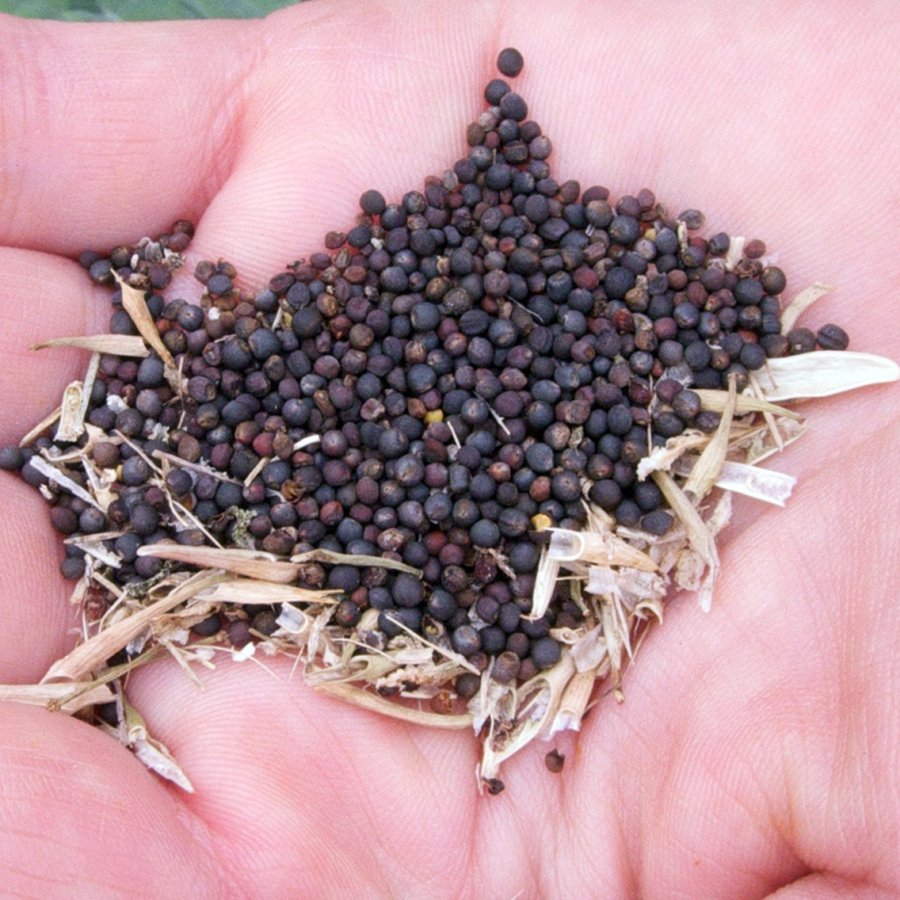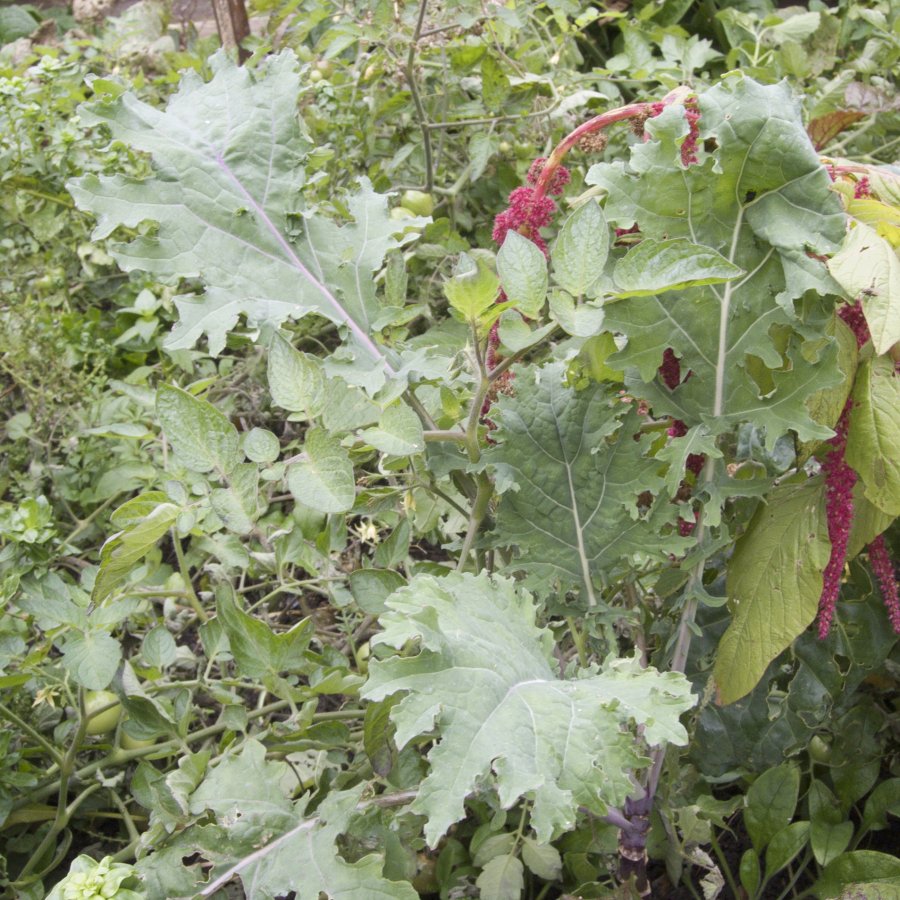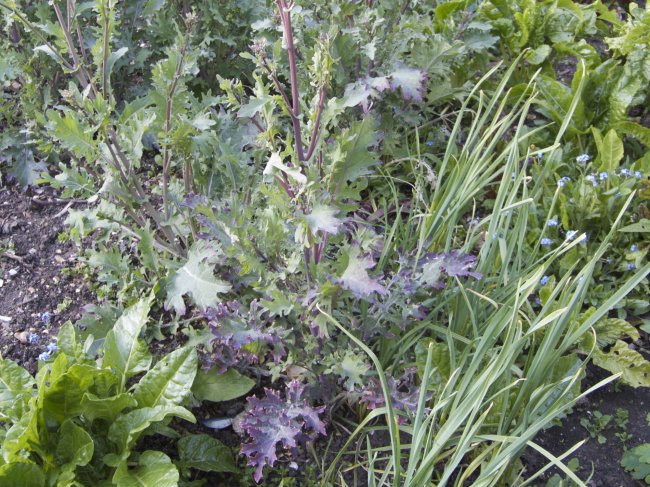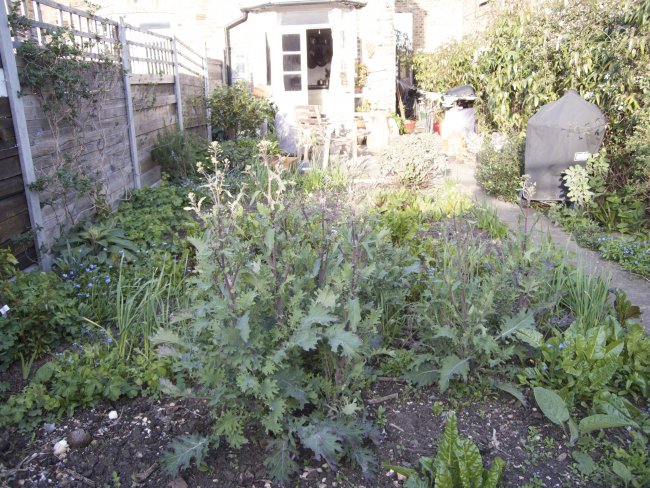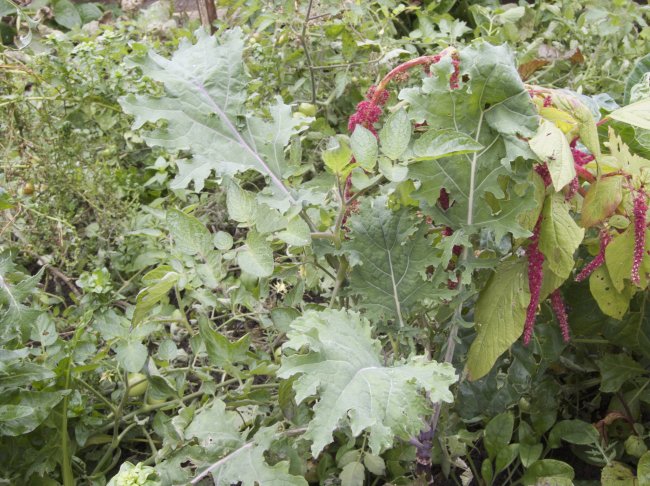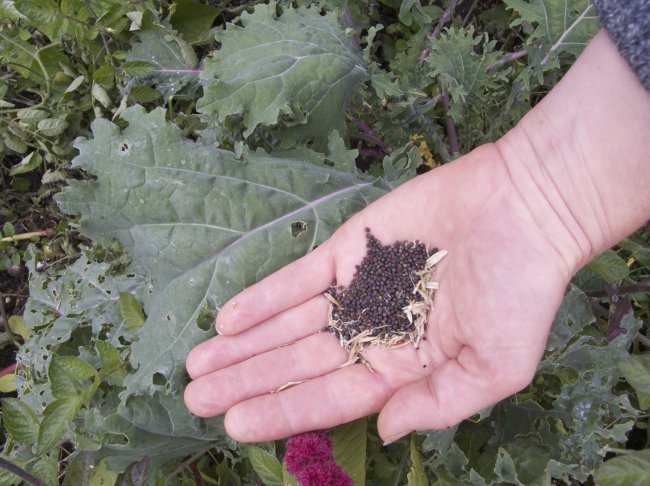Kate Williams
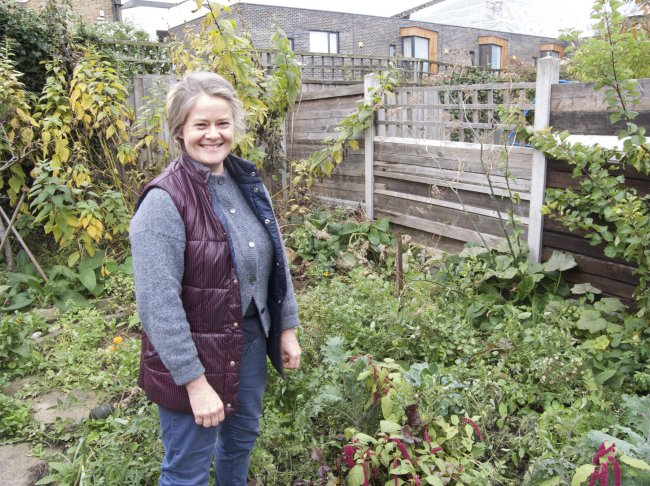
About
Seed Guardian
I’ve been growing food and gardening for flowers for as long as I can remember. I keep the seeds and I keep plants living their whole life for the animal biodiversity so there’s insects coming...
More
Why I grow it
I grow it because it’s robust and it goes through the winter. It’s a hardy British arable crop. We grow it to feed cattle. It’s a new superfood for humans, but it really is quite an easy thing to grow. It’s not like other cabbage plants where you’re trying to get hearts and cabbages and you’ve got issues of white butterflies and caterpillars eating your crop. It’s the joy of cutting and coming again. You just keep hacking it back and it just keeps growing. I’m really keen on crops like that, particularly in a small space, so you’ve constantly got fresh greens without having to worry.
Where the seeds came from
I was working in an organic garden last year and there were a couple of seedlings that were going in the bin that I rescued. I quite like rescuing plants. So I was eating the kale last year, left some to go to seed, which have now come to seed this year, ready to grow again next year.
Kate on Red Russian Kale
How to grow
I probably sowed them late April into a simple seed tray with compost. They don’t need to be propagated indoors, they’re quite a tough hardy plant. So just defending them from the slugs and snails, who love seedlings of any sort. Once they’re decent sized plants, three to four inches high, transfer them into the garden in rows… More
